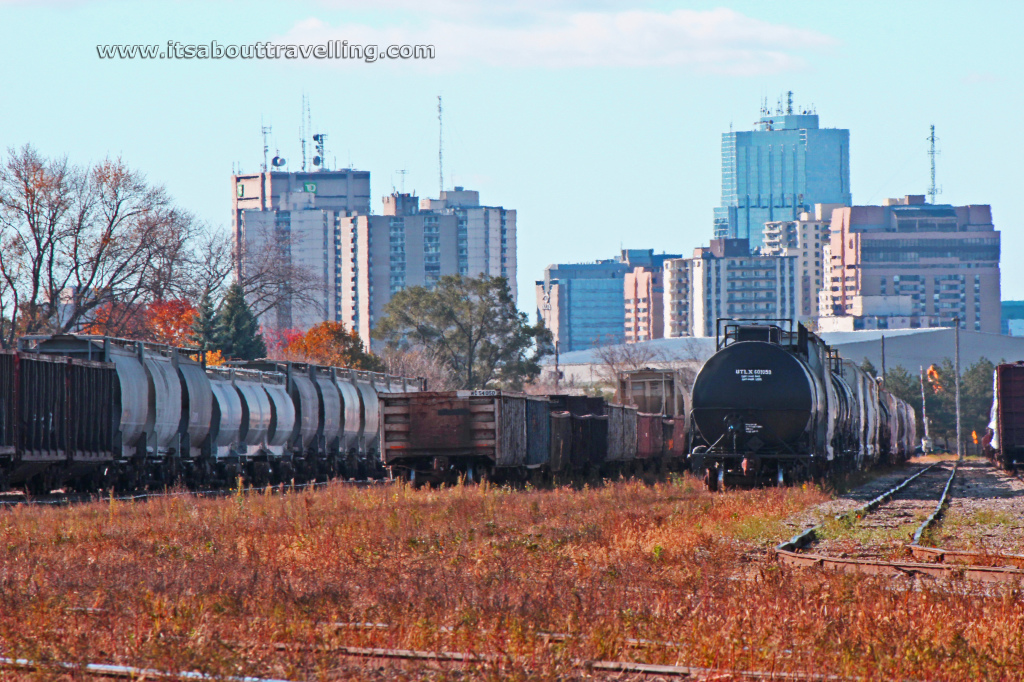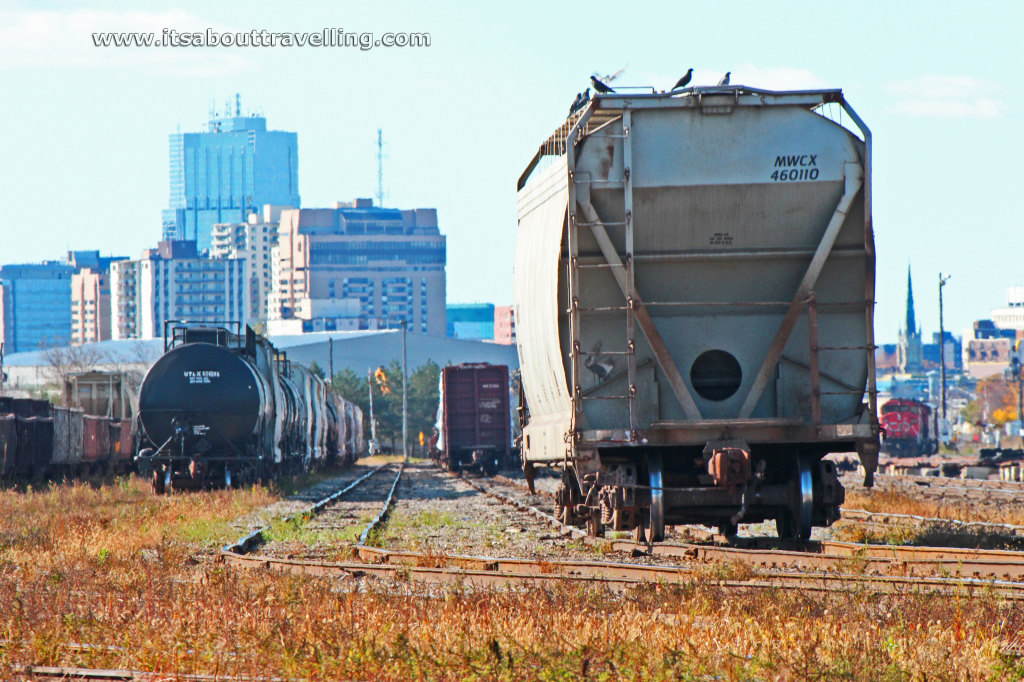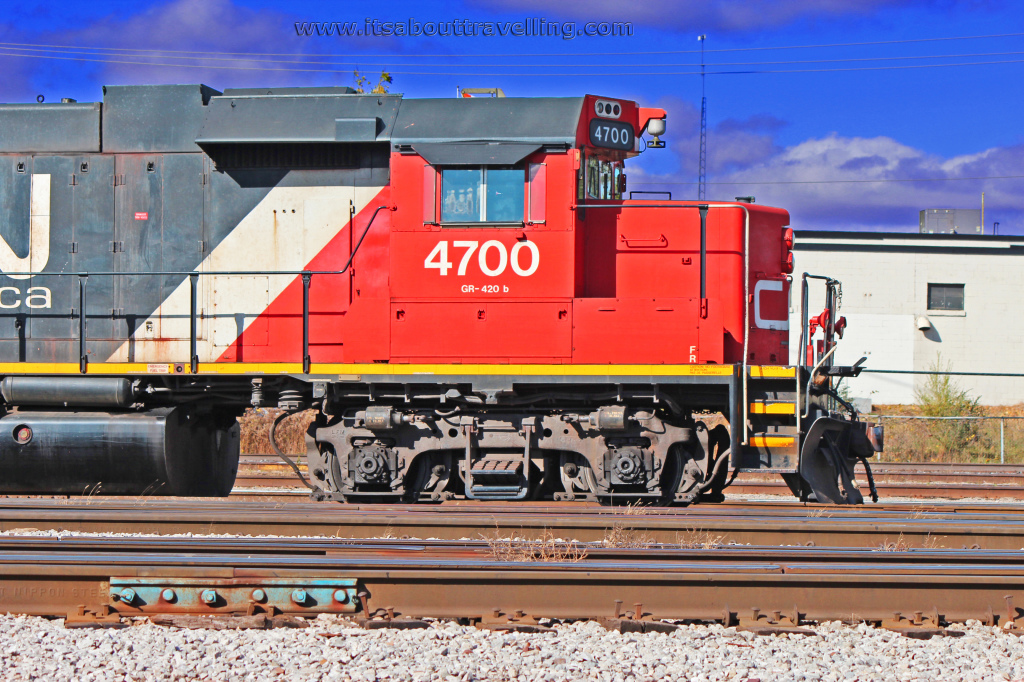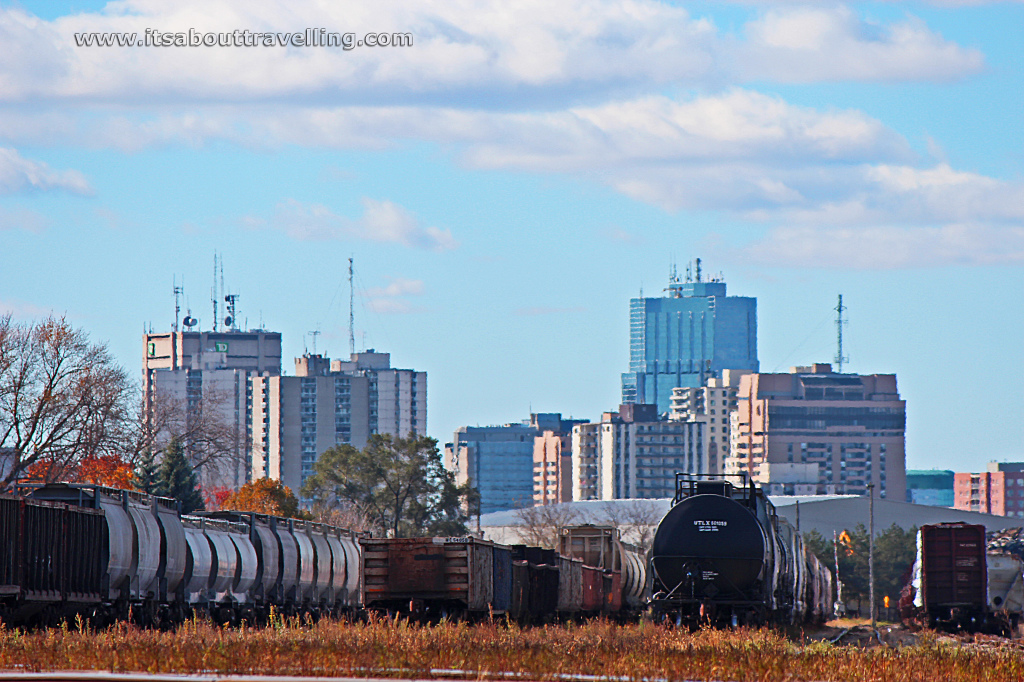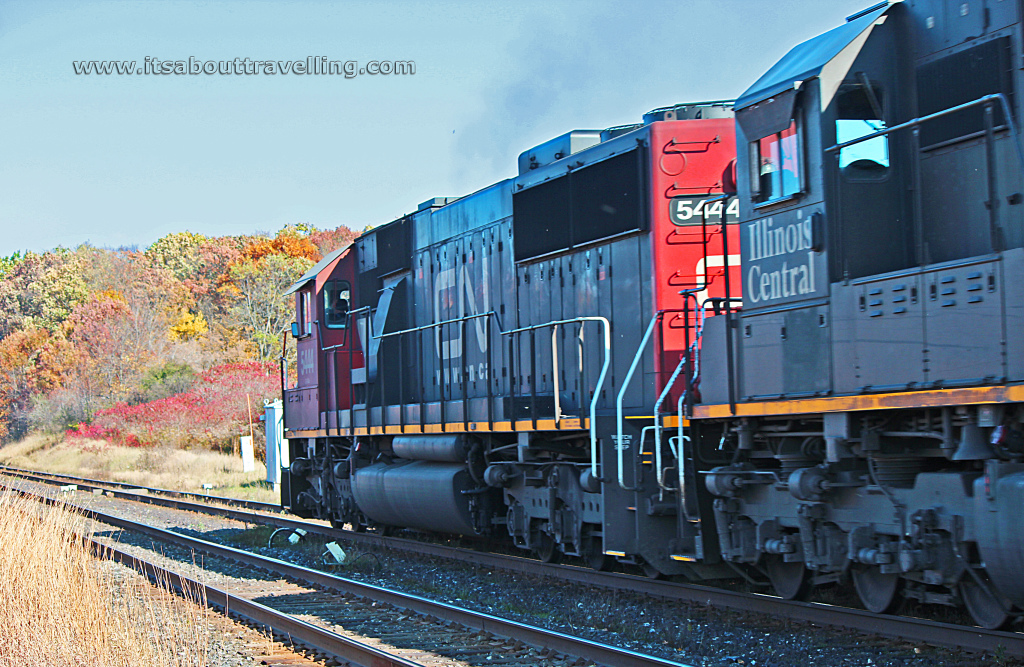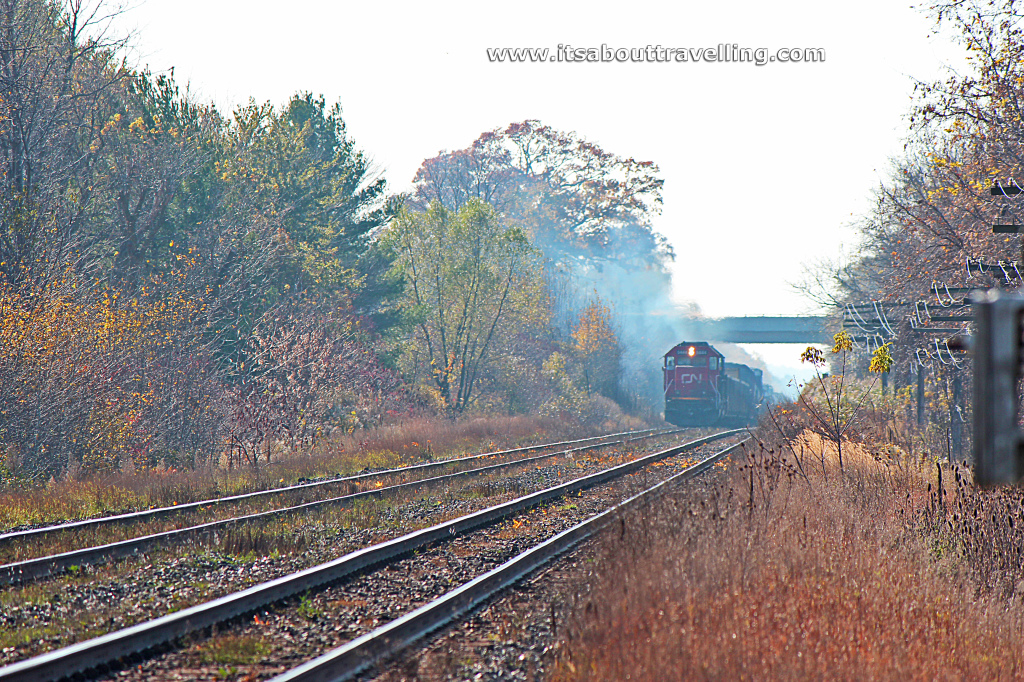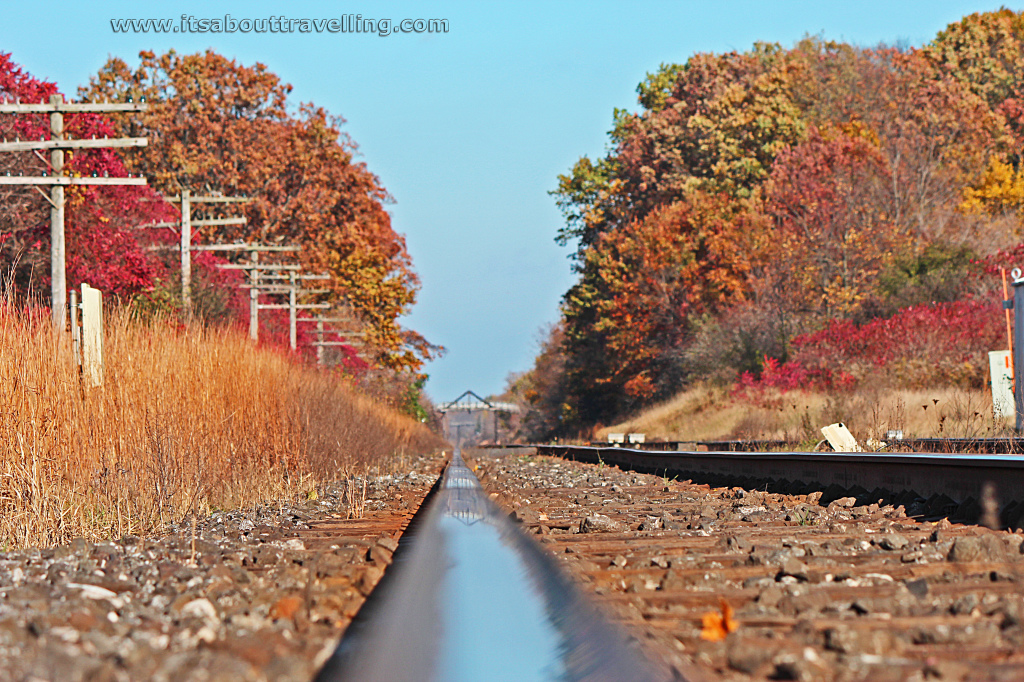I grew up in London, Ontario, in the west end. Where I lived was once a small town called Byron. Byron was swallowed up by London in the 1960’s but it retained a small town atmosphere until recently.
When I was a kid and sleeping out in a tent in the backyard on summer nights, I took it for granted that you could hear train horns in the distance. On some nights, you could actually hear the train roaring down the tracks. The tracks came never closer than 5km from my home.
Recently, myself and my three siblings were at the house in Byron. My Mother passed away in late April of this year and my Father has recently moved into a senior’s complex. The house is still owned by him but the day will come soon when he will sell it. We were there to divvy up the things that he didn’t want to take to his new bachelor pad.
We were out on the back patio at night and I had a new appreciation for those train horns that I’d heard from a tent in that backyard so long ago. It was a quiet enough neighbourhood to raise your kids that you could hear what was going on over three miles away.
I was down for that weekend with my train-obsessed two year old so we had to do some ‘trainspotting’ or ‘train fanning’, as I think it might be called in North America. London, Ontario is an excellent place for this and has been since the mid-1800’s.
To the west of Byron, around Kilworth and Komoka, is a mess of train tracks that remain quite active today. Lines belonging to CN Rail and CP Rail criss-cross and connect in this area, making the chances of spotting a train around 100%.
The bottom three images in this article are taken in this area.
The rest of the images are taken in the east end of London around the CN rail yards. This is an area known as ‘East of Adelaide’ or ‘EOA’. Growing up, this was definitely the ‘other’ side of town. We were told it was a dangerous place and that was somewhat the truth.
London is a city of around 370,000 today and was around 250,000 when I was a kid. So, it’s not the largest of cities but it’s no small town either. For most of the first 18 years of my life, I rarely travelled east of the downtown core, except to go to the Western Fair in September and to play hockey or baseball.
So, what I’m getting at is that I never discovered the magic of the east end rail yards. I lot of the history of this rail hub city has been destroyed but much of existed when I was a kid. What’s left is tracks. There’s no longer the classic roundhouse. The final remains of that structure were torn down before 2000.
As for passenger rail, the city was home to several train stations over the years. There is just one station now, the CN station on York Street in downtown, on the north side of the tracks. The first station at this location was owned by the Great Western Railway in 1853.
That station remained until 1935 when it was demolished to make way for a brand new CN Station. That building only lasted until the 1960’s. A ten story structure was built on the location in 1975 and is the train station that I grew up with. That building was demolished in 2001 and the latest building was put up.
Across the tracks from where the present station exists, there stood the Michigan Central Railway Station. This structure was built in 1886 and received trains from the Michigan Central Railroad from 1887 to 1915. That building was demolished in 1937.
A Canadian Pacific Railway station stood in the northern extremes of downtown, just off Richmond, Street.
The text isn’t matching the pictures, but that’s okay. In regards to the images above of the east end rail yards with the downtown skyline in the background, this is a unique view for me, someone who lived in the city for around a quarter century.
The downtown skyline of London, Ontario is a tough cookie to get a really good and complete photograph of, in my opinion. There’s lots of angles but they way things slope and all the damn trees seem to get in the way of a good shot. London is known as the ‘Forest City’ and these trees seems to get in the way of everything.
This used to bug me when I was a kid because the pictures of London that showed on to the world in books and on television never seemed to show off the true size of the city. No matter the angle, you always seemed to only be able to see two or three buildings.
Seeing the city from a different angle the other week opened my eyes and was really an out of the box experience. I love the contrast between the used and abused train cars and tracks and the somewhat modern structures of the downtown all blended together.
The video below shows a freight train passing by near Kilworth (or maybe closer to Hyde Park – which doesn’t exist anymore because London ate it up like it did Byron).


